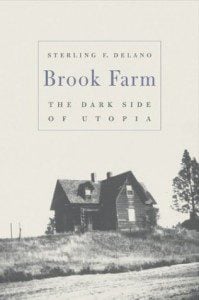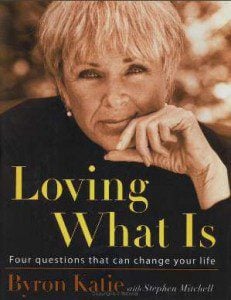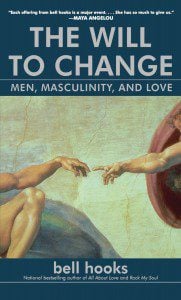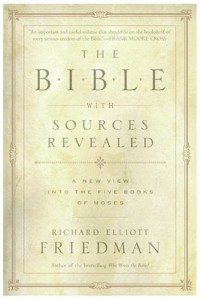9:18 The sons of Noah who went out of the ark were Shem, Ham, and Japheth. Ham was the father of Canaan. 19 These three were the sons of Noah; and from these the whole earth was peopled. 20 Noah, a man of the soil, was the first to plant a vineyard. 21 He drank some of the wine and became drunk, and he lay uncovered in his tent. 22 And Ham, the father of Canaan, saw the nakedness of his father, and told his two brothers outside. 23 Then Shem and Japheth took a garment, laid it on both their shoulders, and walked backward and covered the nakedness of their father; their faces were turned away, and they did not see their father’s nakedness. 24When Noah awoke from his wine and knew what his youngest son had done to him, 25 he said, “Cursed be Canaan; lowest of slaves shall he be to his brothers.” 26 He also said, “Blessed by the Lord my God be Shem; and let Canaan be his slave. 27 May God make space for Japheth, and let him live in the tents of Shem; and let Canaan be his slave.”
Genesis 9:18-27
Note: This sermon is part of an ongoing series tracing “The Book of J” strand of Genesis. A link to previous entries in this series can be found at the bottom of each post. Also see the notes at the end for introductory information.
Many of you know that as an undergraduate I attended Furman University in Greenville, South Carolina. For the most part I am proud to be associated with one of our nation’s top liberal arts colleges, but history buffs know that there is at least one major skeleton in Furman’s closet. Furman University is the namesake of Richard Furman (1755-1825), who is arguably the most important Baptist leader in the early 19th century. He began preaching at age 16, and ascended to the pastorate of First Baptist Church in Charleston, a flagship congregation. He was also the first president of the Triennial Convention, the first national body of Baptists in America, founded in 1814, decades before the Southern Baptist Convention was formed in 1845.
As some of you can likely guess, the Southern Baptist Convention was originally formed as an alternative to the Triennial Convention for one main reason — the same reason that many religious denominations split in the mid-19th century and the same reason that our country almost split in two — a controversy over slavery. Many southern churches wanted the Triennial Convention to fund missionaries who taught that the Bible supported slavery. But many abolitionist northern churches did not want to their mission dollars financing pro-slavery missionaries. This controversy led to a schism in which the southern churches broke away from the larger, national body of the Triennial Convention to form the Southern Baptist Convention. Those abolitionist, mostly northern churches who remained became the predecessors of today’s American Baptist Churches, USA.
But that split happened twenty years after Richard Furman’s death. And he did many admirable acts in his life, including his strong support for Baptist higher education, which is one of the reasons Furman University was named after him. His son, James Clement Furman, was the first president of the university. However, although Richard Furman was not alive for the schism over slavery schism that led to the Southern Baptist Convention, he did contribute to that tragic event in an infamous letter than he wrote in 1822 on — of all days — Christmas Eve to the Governor of South Carolina. This twenty-four page letter is a robust, reprehensible, and infamous defense of why the Bible should be interpreted as supporting slavery.
The following is a brief excerpt of his rationale:
Had the holding of slaves been a moral evil, it cannot be supposed, that the inspired Apostles, who feared not the faces of men, and were ready to lay down their lives in the cause of their God, would have tolerated it, for a moment, in the Christian Church. If they had done so on a principle of accommodation, in cases where the masters remained heathen, to avoid offenses and civil commotion; yet, surely, where both master and servant were Christian, as in the case before us, they would have enforced the law of Christ, and required, that the master should liberate his slave in the first instance. But, instead of this, they let the relationship remain untouched, as being lawful and right, and insist on the relative duties. In proving this subject justifiable by Scriptural authority, its morality is also proved; for the Divine Law never sanctions immoral actions.
So while I am, for the most part, proud to be a graduate of the religion and philosophy departments of Furman University, I am not proud of how the university’s namesake interpreted the Bible in this instance. And while Richard Furman is a product of his time and while he had many laudable achievements, in many circles he has become notorious for this one letter, which servesas a cautionary tale of how one act can affect how the rest of your life is remembered.
Turning to more recent events, a little more than a week ago when President Obama came out of the closet as a supporter of same-sex marriage and as an ally for Lesbian, Gay, Bisexual, and Transgender citizens, the difficulty of biblical interpretation again reared its head. And we began seeing headlines in the media such as “Same-sex Marriage Support Shows Diversity in African-American Religious Community.” Ironically some African-American pastors support a contextualized, non-literal reading of some parts of the Bible that could be read a supporting slavery, while also supporting non-contextualized, literal readings of some parts of the Bible that could be read as being against same-sex marriage. Many other Black pastors and leaders, however, courageously support LGBT human rights, including the NAACP. The larger point is that we all have our blind spots, where we need others to prophetically challenge us to be more aware and inclusive.
Ultimately, each individual must decide for him or herself how to interpret the Bible or any other text, but as many of you know, my view is that we should follow Jesus’ example in emphasizing the parts of scriptures that talk about the love of God and neighbor. In this view, we should pay more attention to the parts of scripture that increase the love of God and neighbor and less attention to the parts of scripture that decrease the love of God and neighbor. Even better, we can interpret all of scripture so that our interpretation leads to an increase in the love of God and neighbor.
I have raised these issues about how to interpret the biblical passages regarding slavery because our focal scripture, Genesis 9, has sometimes been interpreted in racist ways that associate the so-called “Curse of Ham” with the origin of dark skinned humans. Of course anthropologists and other scientists can definitively demonstrate the absurdity and offensiveness of such views, but throughout this sermon series on The Book of J, we have seen the power of our founding myths and of the stories that we tell. So I want to invite us too look more closely at what scholars are learning about what the text of Genesis 9 actually says.
I’ll warn you that discussing this text can be awkward because it covers sensitive subject matters, as you already heard from the scripture reading. But confronting this text directly seems important for several reasons. Firstly, it occurs so early in the Bible. Anyone who has ever progressed even nine chapters into the daunting project of reading through the entire Bible has read this text. Also, dealing forthrightly with the adult subject matter of texts such as this one seems necessary if we are to have any hope of building a faith that is worthy of adults in the twenty-first century.
Setting these caveats aside, one initial question that may have occurred to you is whether this story is fair to Ham. On the surface, the story tell us that Noah planted the vineyard. Noah drank so much wine that he go drunk. And Noah stripped off his clothes and passed out naked in his tent. If we take the text literally, all Ham did was “see” his father’s nakedness and tell his two brothers about it. Maybe he had a question to ask his dad, and had no idea that his father had been spared from an epic flood only to get drunk and pass out naked. I don’t mean to be crass, but sometime we can miss how much some stories in the Bible sound like an episode of reality television!
Also, the text tells us that Noah somehow “knew what his youngest son had done to him.” How would Noah — who was unconscious at the time — have known that Ham had seen him naked? The only evidence was that the other two brothers had covered him with a garment. But how would Noah have known who did what? Furthermore, wouldn’t Noah have been much more preoccupied at that point with being hungover?
And one more point, Ham is never explicitly cursed. The text says, “Cursed be Canaan,” Ham’s son. Why would Noah curse his grandson instead of his son, the alleged perpetrator?
To begin to unpack some of these questions, an eternal curse does seem extreme for accidental voyeurism. However, many of you rightly protested last week that the Flood story presents an extremely violent view of God as the destroyer of almost all humankind. So one potential response for some of you may be to disavow some of these stories, and to question whether they are appropriate for telling — especially to children — in the 21st century. I’m not saying that we should get rid of these stories, but should we perhaps consider that some Bible stories should be at least rated PG-13 or R and treated accordingly?
Speaking of “adult-only” interpretations, one traditional reading of this text is that while Noah was passed out drunk, Ham castrated him as a symbolic attempt to usurp his father’s authority. This explanation makes more sense if we look forward one chapter to Genesis 10:6, which tells us that, “The descendants of Ham [are] Cush, Egypt, Put, and Canaan.” Thus, perhaps Noah cursed Canaan, Ham’s fourth son, because Noah — after being castrated — was now no longer able to have a fourth son in addition to Shem, Ham, and Japheth. But this reading is merely an educated guess. There is no explicit reference to castration in the text itself.
The lack of an explicit textual reference to castration has prompted scholars to make other educated guesses. And I want to share two more of these possibilities with you. The first — as shocking as this interpretation can seem at first — is paternal incest. The text says, “Ham, the father of Canaan, saw the nakedness of his father,” and “seeing nakedness” is sometimes a euphemism for sexual intercourse in the Bible.
Before you make up your mind about this interpretation, consider these two scriptures. Leviticus 20:17 says, “If a man takes his sister, a daughter of his father or a daughter of his mother, and sees her nakedness, and she sees his nakedness, it is a disgrace, and they shall be cut off in the sight of their people; he has uncovered his sister’s nakedness, he shall be subject to punishment.” Similarly, Leviticus 18:6 says, “None of you shall approach anyone near of kin to uncover nakedness: I am the Lord.” Most scholars think that these verses are not simply about voyeurism (as they appear to be on the literal level); they are almost definitely euphemistic taboos against incest.
But here is one more educated guess about what this text is about, which is also the interpretation that, upon reflection, I have personally found most convincing. We just heard Leviticus 18:6 on the prohibition against uncovering nakedness of one’s kin, but the next two verses may be even more illustrative. They read, “7 You shall not uncover the nakedness of your father, which is the nakedness of your mother; she is your mother, you shall not uncover her nakedness. 8 You shall not uncover the nakedness of your father’s wife; it is the nakedness of your father.” Thus, we see that in Bible-speak the phrase “nakedness of your father” can be used interchangeably with the phrase “nakedness of your mother” — similar to how the masculine word “man” used in a sexist way as potentially meaning either male or female.
So perhaps what happened is that Ham had sex with his mother, not his father, while his father was passed out. This scenario would also explain why Canaan (if he were the son of incest) would have been cursed instead of Ham. Also, whereas Noah’s other two sons are introduced simply by name, Ham is identified as “the father of Canaan.” This pattern is repeated in the key verse in which the transgression happens: “And Ham, the father of Canaan, saw the nakedness of his father, and told his two brothers outside.”
I apologize if this interpretation seems too outlandish or transgressive, but I cannot help pointing out that this tale of “Noah and his Three Sons” could be seen as a miniature version of Sophocles’ famous Greek tragedy, Oedipus Rex in which the protagonist unknowingly kills his father and marries his mother. (Odysseus hears as earlier version of this myth in Homer’s Odyssey.)
Remember also that the person who is cursed is named Canaan. And the Hebrew people took over the “Promised Land” from the Canaan-ites. Thus, it makes sense that a story might be told about the Canaanites originating from incest. Think of it as anti-Canaanite propaganda that helps legitimize the new ownership of the land.
As to the applications of this myth to today, perhaps the best response would be, “Paging, Dr. Freud!” But rather than addressing the contemporary applicability (or not) of Freud’s “Oedipus Complex,” the most important “mythic” point regarding The Book of J is that human beings have always had to wrestle with sexuality and morality. And from slavery to same-sex marriage, it really matter what stories we tell, when we tell them, and how we interpret them. We must learn to interpret scripture not like Richard Furman, which was only for the benefit of himself and his tribe. We must learn to interpret scripture freely, responsibly, creativity, and compassionately — not only for ourselves but for all people and the whole of creation.
Previous Sermons in this Series
“The Book of J”: Are There Hidden Books in the Bible? (Genesis 2). Description: Many scholars think that there are “hidden” books in the Bible: the books used as source material to compile the final version of the biblical books with which we are familiar. http://www.patheos.com/blogs/carlgregg/2012/04/preaching-%E2%80%9Cthe-book-of-j%E2%80%9D-are-there-hidden-books-in-the-bible/.
“Paradise Lost or Outgrown? Genesis 3, Original Blessing, and Original Responsibility” (Genesis 3).Description: Genesis 3 is a deeply true universal story about the human condition, even though this precise series of events never happened historically. It’s a story about growing up, becoming aware of good and evil, and learning that our actions have consequences. It’s a tale about that instant when the veil of childhood innocence drops away for the first time and we realize our mortality; it’s about that moment when we realize that we too are someday going to die. This metaphorical, mythological, and archetypal way of reading the Bible’s earliest chapters is so much more exciting and compelling than more literal approaches. It also makes much more sense than asking question like, “Did Adam have a belly button? or “Where did Mrs. Cain come from?” http://www.patheos.com/blogs/carlgregg/2012/04/paradise-lost-or-outgrown-genesis-3-original-blessing-and-original-responsibility
“Before and After: Cain, Abel, and Archetypes” (Genesis 4). Description: In our postmodern times, there is much to be regained in reclaiming some premodern reading strategies: allowing ourselves to say both “Yes, many of these story are more mythological than historical” and “Yes, many of these stories still have significant meaning on the level of myth and metaphor, allegory and archetype, symbol and sacrament. From this angle, the story of Cain and Abel becomes the universally true story of the farmer “killing” the lifestyle of the semi-nomadic herder and moving to the city. God’s rejection of the fruit of Cain’s farm and Cain being cast out from the plains east to Eden into the city reveals that the authors and promoters of this biblical myth had an anti-city bias and were far from convinced that the move toward urbanization was “progress.” They saw many dangers in city life, and we were see a similar anti-urban bias in future texts, especially regarding the Towel of Babel. http://www.patheos.com/blogs/carlgregg/2012/05/before-and-after-cain-abel-and-archetypes/
“Noah’s Flood: Climate Change Then & Now” (Genesis 6-7). Description: Perhaps the most salient parallel for the early twenty-first century is that Climate Change seems to be causing a melting of Arctic sea ice, resulting in a rise of flood waters, potentially not unlike those ancient floods of Noah or Gilgamesh, which were “caused,” at least according to the mythological accounts, by human behavior. Talking about Climate Change is appropriate on Mother’s Day, which at its best honors and celebrates the blood, sweat, and tears put in to creating both new life and a better, more life-giving world for future generations. http://www.patheos.com/blogs/carlgregg/2012/05/noah%E2%80%99s-flood-climate-change-then-now/
Notes
1 The four main original independent sources used to compile the early books of the Bible are called J, E, D, and P. Similar to the “Q Source” used to compose the Gospels of Matthew and Luke, J-E-D-P are each shorthand for the full title scholars have given to these sources. The Book of J, which stands for the “Jahwist.” Normally, we English-speakers would begin spelling YaHWeH with a “Y,” but the landmark scholars who developed this “Documentary Hypothesis” were Germans.
The J source almost exclusively refers to God as “Yahweh,” whereas the second source uses the basic Hebrew word for God, Elohim. Hence, is known as a the “E Source.” Then we have the “P Source,” which was written by the Priestly class as a response to the version of history in J and E. The fourth and final source is the “D,” which is primarily in Deuteronomy. J, P, and D also continue into Joshua, Judges, Samuel, and Kings.
Two pieces of evidence particularly contributed to this Documentary Hypothesis: doublets (two, slightly different versions of the same story) and the names of God. As scholars compared the doublets in Hebrew Bible, they also noticed that usually one of each pair used the name Elohim for God and the other used the name Yahweh for God. Moreover, the E stories showed a bias toward the northern kingdom of Israel, and the J stories showed a bias toward the southern kingdom of Judah.
In 722 B.C.E., after the Assyrians destroyed the northern kingdom of Israel, J and E were likely woven together. We cannot know for sure, but many scholars wagers an educated guess that weaving these two rival documents together was a symbolic way of “reuniting” the rival kingdoms in the wake of one kingdom being tragically conquered and destroyed.
For more on “The Book of J” and related resources, see the first sermon in this series, “Preaching ‘The Book of J’: Are There Hidden Books in the Bible?” Available at http://www.patheos.com/blogs/carlgregg/2012/04/preaching-%E2%80%9Cthe-book-of-j%E2%80%9D-are-there-hidden-books-in-the-bible/. I particularly recommend the work of Richard Elliott Friedman as an accessible entry point into the source behind the Hebrew Bible.
2 For more on the history of the mid-19th century Baptist schism over slavery, see Bill Leonard, Baptist Ways: A History, 185-189. For a broader view, see Clarence Goen, Broken Churches, Broken Nation: Denominational Schisms and the Coming of the American Civil War.
3 For a rejection of Richard Furman’s interpretation, see the chapter on “The Bible and Race: The Moral Imagination” in Peter Gomes, The Good Book: Reading the Bible with Mind and Heart.
4 To read the full text of Richard Furman’s letter, visit http://eweb.furman.edu/~benson/docs/rcd-fmn1.htm.
5 Rev. Dennis Wiley, “Same-sex marriage support shows diversity in African-American religious community,” The Washington Post (May 16, 2012), available at http://www.washingtonpost.com/local/same-sex-marriage-support-shows-diversity-in-african-american-religious-community/2012/05/16/gIQA7v6QUU_story.html. See also Rev. Brad Braxton, “Same-sex marriage support a sign of love, acceptance and devotion to God,” The Washington Post (May 16, 2012), available at http://www.washingtonpost.com/local/same-sex-marriage-support-a-sign-of-love-acceptance-and-devotion-to-god/2012/05/16/gIQAlkFkTU_story.html.
6 “In Largely Symbolic Move, N.A.A.C.P. Votes to Endorse Same-Sex Marriage,” available at https://www.nytimes.com/2012/05/20/us/politics/naacp-endorses-same-sex-marriage.html?_r=1.
7 For more on interpreting scripture as Jesus did, see my post on “‘Why Not Choose Love?’ Picking and Choosing Scripture as a Twenty-first Century Christian,” available at http://www.patheos.com/blogs/carlgregg/2011/10/%E2%80%9Cwhy-not-choose-love-picking-and-choosing-scripture-as-a-twenty-first-century-christian%E2%80%9D-a-progressive-christian-lectionary-commentary-for-oct-23-2011/.
8 In tracing the emerging scholarship in Genesis 9, I will be relying on John Sietze Bergsman and Scott Walker Hahn’s excellent article “Noah’s Nakedness and the Curse on Canaan(Gen 9:20-27),” Journal of Biblical Literature (124:1, Spring 2005). The various options for interpretation are also summarized in the annotations to Genesis 9 in The Jewish Study Bible.
9 For more reflections on how to confront violent Bible stories, see Phyllis Trible, Texts of Terror: Literary-Feminist Readings of Biblical Narratives and Philip Jenkins, Laying Down the Sword: Why We Can’t Ignore the Bible’s Violent Verses.
10 Also see the following parallel verses:
- Lev 18:14, “14 You shall not uncover the nakedness of your father’s brother, that is, you shall not approach his wife; she is your aunt.”
- Leviticus 18:16, “You shall not uncover the nakedness of your brother’s wife; it is your brother’s nakedness.”
- Leviticus 20:11, “The man who lies with his father’s wife has uncovered his father’s nakedness; both of them shall be put to death; their blood is upon them.
- Leviticus 20:21, “If a man takes his brother’s wife, it is impurity; he has uncovered his brother’s nakedness; they shall be childless.
The Rev. Dr. Carl Gregg is a trained spiritual director, a D.Min. graduate of San Francisco Theological Seminary, and the pastor of Broadview Church in Chesapeake Beach, Maryland. Follow him on Facebook (facebook.com/carlgregg) and Twitter (@carlgregg).












